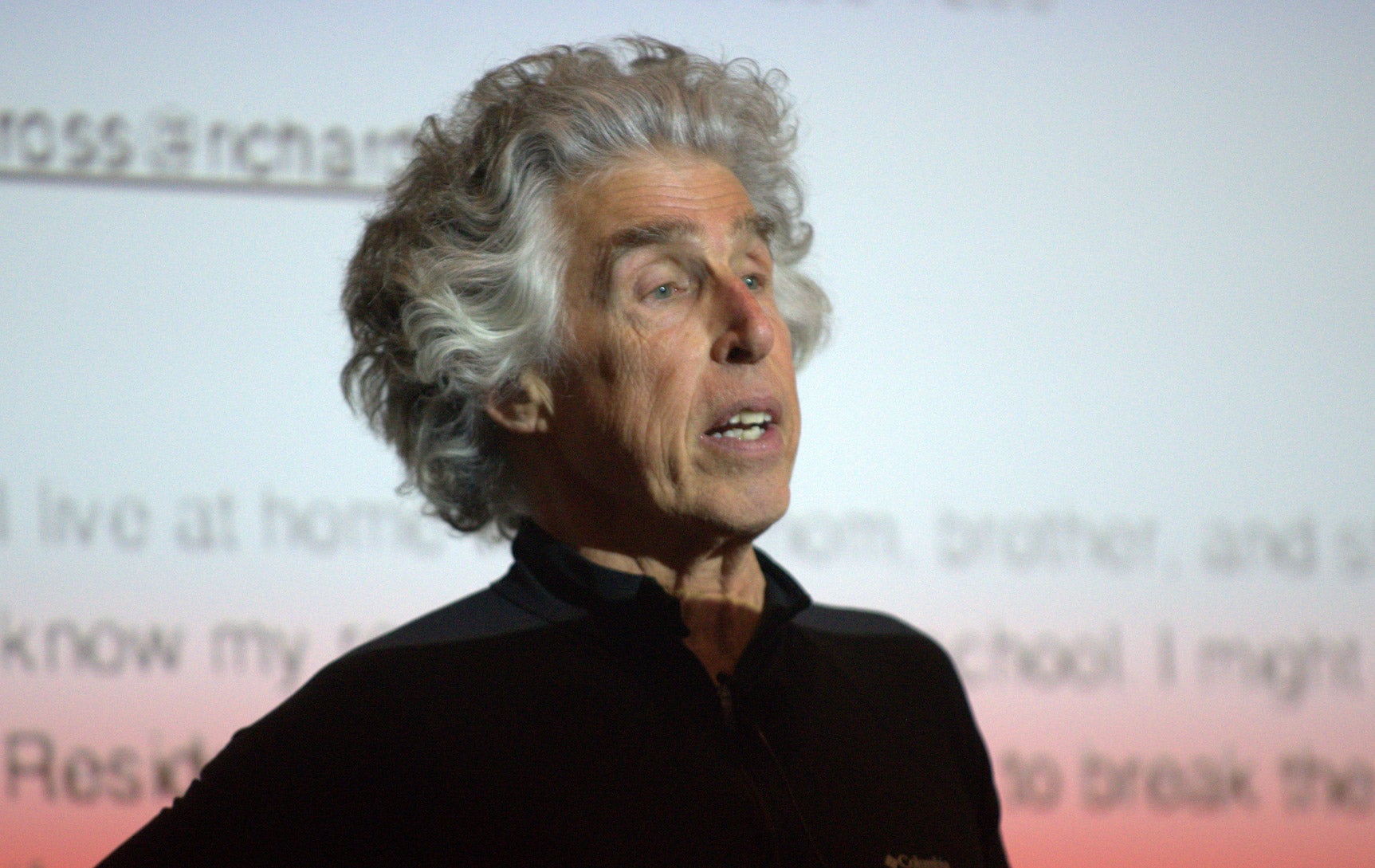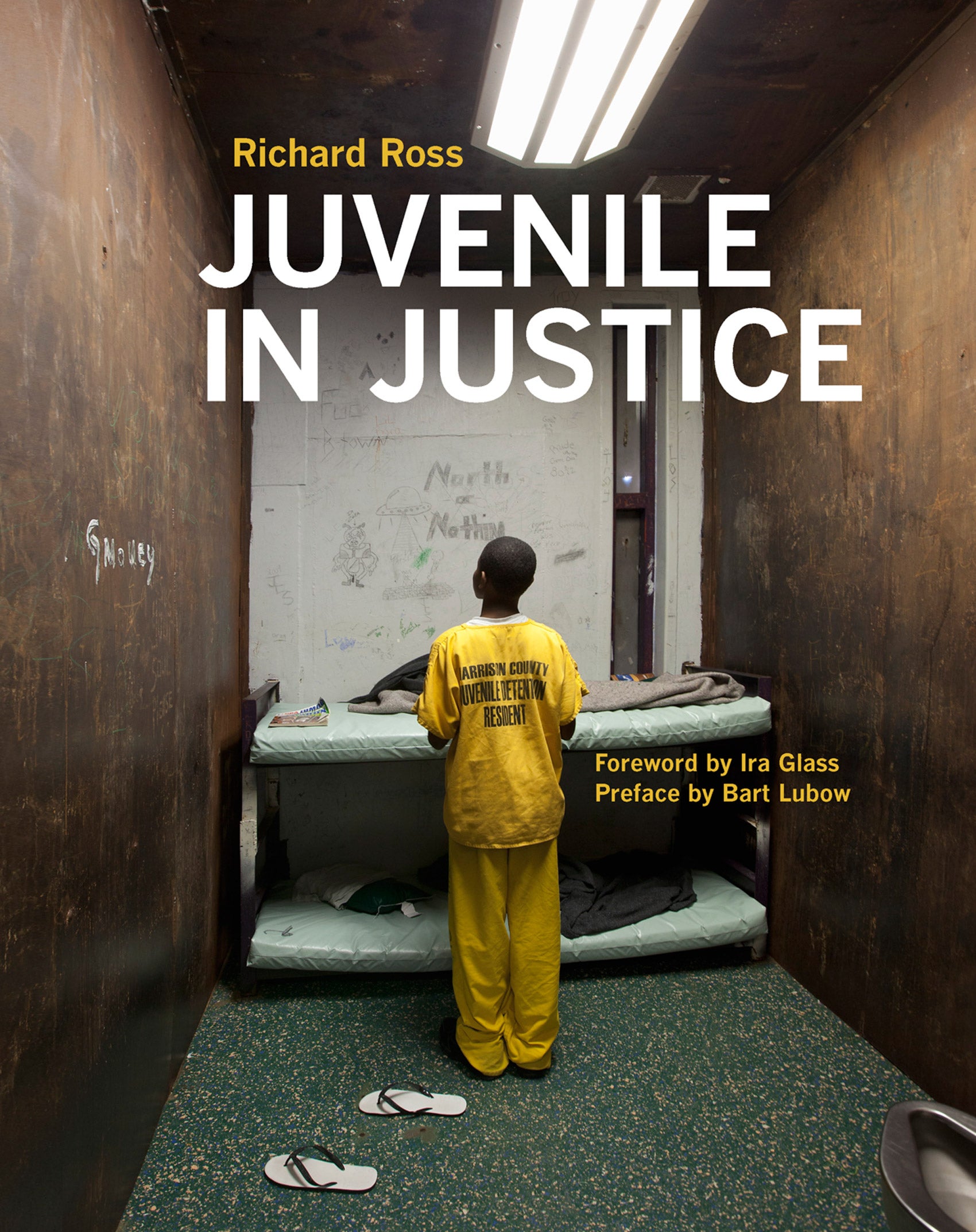
Nearly 70,000 young people in the United States are held by law in detention or correctional facilities that treat, confine, punish, assist and, occasionally, harm them. Over the past eight years, Photographer Richard Ross has visited more than 200 juvenile detention centers in 31 states to shed light on the stark conditions faced by these imprisoned youth.
A selection of photographs from Ross’ haunting collection, “Juvenile in Justice,” is on display at Harvard Law School, on the 3rd floor of Wasserstein Hall, from March 21 to April 11. The exhibit is sponsored by the Charles Hamilton Houston Institute for Race & Justice.
Ross, a tenured professor at UC-Santa Barbara, has been the recipient of grants from the National Endowment for the Arts and Annie E. Casey Foundation, as well as Fulbright and Guggenheim Fellowships. He was the principal photographer for the Getty Conservation Institute and the Getty Museum on many of their architectural projects, and has photographed for The New York Times, Los Angeles Times, Vogue, Esquire, COLORS, and more.
Ross makes all of his photographs available to institutions, advocacy organizations, non-profits, news and media organizations, and scholars who use the images gathered in the project to illustrate reports, websites, campaigns and more. “Organizations have better data and more skills at advocating for policy change than I do. I hope this will better arm them to show a human side to their statistics,” he said.
The photos in this collection were shot between 2005 and 2012, and the exhibit premiered at the Nevada Museum of Art in Reno, Nevada, in August of 2012. Ross’ work has since been published on CBS News, Wired.com, NPR, PBS Newshour, ProPublica, The New York Times, The New Yorker and Harper’s Magazine, for which it was awarded the 2012 ASME Award for Best News and Documentary Photography.
“So often art that speaks to social justice issues is simply looked at, provoking brief contemplation among the audience. While awareness is certainly great, this exhibition turns the gallery into a laboratory for social change: photographic evidence of a problem hangs on the walls, while the people among the art work to alleviate it,” Ross told Wired.com.
A companion book is also available, which compiles nearly 150 images from the collection with essays by Ira Glass of National Public Radio’s “This American Life” and Bart Lubow, director of the Annie E. Casey Foundation’s Juvenile Justice Strategy Group.
The Charles Hamilton Houston Institute for Race and Justice at Harvard Law School (CHHIRJ) was launched in September 2005 by Harvard Law School Professor Charles J. Ogletree, Jr. The program’s long-term goal is to ensure that every member of society enjoys equal access to the opportunities, responsibilities and privileges of membership in the United States.
The Institute for Race & Justice organizes public events, free and open to all, that bring some of the nation’s eminent thinkers, experts and leaders to Harvard Law School. The program also collaborates with community, regional and national organizations on policy and legal matters, and members write and present amicus briefs, policy briefs, and written and oral testimony to state legislatures and to Congress.
